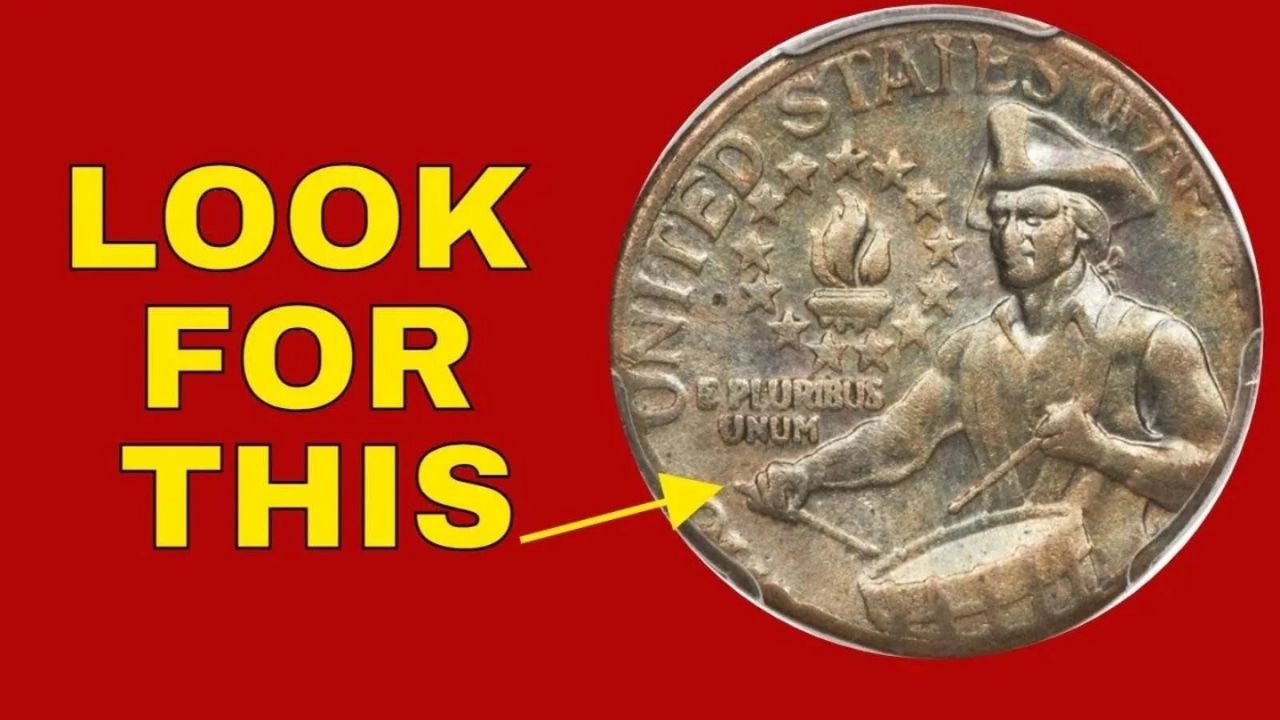The Rare Bicentennial Quarter Valued at $11 Million, Still in Circulation, In the fascinating world of coin collecting, some coins transcend their face value and become priceless pieces of history. Among these treasures, the Rare Bicentennial Quarter stands out as a symbol of American heritage and a sought-after prize for collectors worldwide. Minted in 1975 and 1976 to celebrate the 200th anniversary of the United States’ independence, these quarters are more than just currency—they are a tribute to the nation’s rich past. While most Bicentennial Quarters are common and worth little beyond their 25-cent face value, a few rare variants have stunned the numismatic community with jaw-dropping valuations, including one believed to be worth an astonishing $11 million. Remarkably, some of these rare coins could still be hiding in everyday pockets and change jars across the country.
What Makes the Rare Bicentennial Quarter So Special?
The Rare Bicentennial Quarter was created to mark the United States’ bicentennial celebration in 1976. Instead of the usual eagle on the back, these quarters feature a unique design: a colonial drummer boy surrounded by a torch and thirteen stars, representing the original colonies. This design was the result of a nationwide competition won by artist Jack L. Ahr. On the front, the coin carries the dual date “1776–1976” beneath George Washington’s profile, making it instantly recognizable.
Unlike other commemorative coins produced in small quantities, over 1.6 billion Bicentennial Quarters were minted for general circulation, so most are still common. However, within this massive production run, there are a few rare exceptions—special variants and error coins that have become highly prized by collectors.
Composition and Rare Variants: Why Some Bicentennial Quarters Are More Valuable
The majority of these quarters are made from a copper-nickel clad composition. However, the U.S. Mint also issued limited numbers of 40% silver quarters as part of special uncirculated and proof coin sets. While these silver versions are scarcer than the standard clad coins, they generally don’t reach the highest echelons of rarity or value.
The real intrigue lies in the rare error coins and prototypes. Some Rare Bicentennial Quarters have unique minting errors like double dies (where design elements are stamped twice), off-center strikes, or even coins struck on unusual metal blanks. One of the most famous examples is a coin believed to have been minted on a 95% silver planchet, which was never meant for circulation. This particular coin is the one rumored to be valued at an eye-watering $11 million.
Such rare coins might also have been produced as internal test samples or special mint proofs that accidentally entered the public domain. Their rarity and unique characteristics have made them legends in the coin collecting community.
The $11 Million Valuation: What Drives Such a High Price?
The staggering $11 million price tag attached to one Rare Bicentennial Quarter is no accident. Several factors contribute to this extraordinary valuation:
- Silver Content: Unlike the common copper-nickel quarters, this rare variant is made of almost pure silver, significantly boosting its intrinsic worth.
- Minting Anomaly: Its production likely involved an unplanned error or prototype status, making it a one-of-a-kind specimen.
- Pristine Condition: Coins graded as MS-70 or PR-70 (Mint State or Proof perfection) are extremely rare, and this coin’s flawless condition increases its value exponentially.
- Collector Demand: High-profile auctions and private collectors drive prices upward when elite buyers compete for such a unique piece.
Remember, coin values are largely determined by what buyers are willing to pay. This rare Bicentennial Quarter’s worth is a perfect example of how history, rarity, condition, and market demand combine to create extraordinary value.
Could You Still Find a Rare Bicentennial Quarter in Circulation?
Although many Bicentennial Quarters remain in circulation today, the chance of stumbling across a rare variant is slim—but not impossible. Millions of these quarters still clink in pockets, wallets, and cash registers, mostly as the standard copper-nickel types. Yet the possibility that one of the rare silver or error coins could be hidden among them keeps collectors and treasure hunters hopeful.
Every time you come across a quarter with a colonial drummer boy on the back, you’re holding a piece of American history. And if luck is on your side, it might be a valuable Rare Bicentennial Quarter.
How to Identify a Rare Bicentennial Quarter
If you want to hunt for a Rare Bicentennial Quarter, here are some key features to examine:
- Date Marking: Check for the dual “1776–1976” date beneath Washington’s portrait.
- Reverse Design: Look for the colonial drummer boy surrounded by thirteen stars and a torch.
- Mint Mark: Coins may carry a “D” for Denver, “S” for San Francisco (usually proofs), or “P” for Philadelphia. Proof coins from San Francisco tend to be rarer.
- Metal Composition: Silver quarters have a duller finish and are heavier than their copper-nickel counterparts. The edge is fully silver without the copper stripe typical of clad coins.
- Minting Errors: Look for doubled letters or numbers, off-center strikes, or irregular edges.
- Condition: The sharper the details and the less wear, the higher the potential value.
What to Do If You Think You Have a Rare Bicentennial Quarter
If you believe you’ve found a rare variant, it’s important to handle the coin carefully:
- Do Not Clean or Polish It: Cleaning can damage the coin’s surface and drastically reduce its value.
- Store Safely: Place it in a soft protective holder or coin capsule.
Also Read : $1100 Direct Deposit Checks In April 2025: Check Eligibility & Payment Dates
- Seek Professional Authentication: Submit the coin to reputable grading services such as the Professional Coin Grading Service (PCGS) or the Numismatic Guaranty Corporation (NGC). These organizations will authenticate, grade, and certify your coin, increasing its marketability.
Frequently Asked Questions About the Rare Bicentennial Quarter
- Are all Bicentennial Quarters valuable?
No. Most are worth only face value or a few dollars based on condition. Only rare error or silver variants have high value. - How do I know if my quarter is silver?
Silver quarters will lack the copper stripe on the edge and will be slightly heavier. They also have a distinct duller shine compared to clad coins. - Can I still find rare Bicentennial Quarters in circulation?
Yes, it’s possible but very rare. Most are common, but treasure hunters remain hopeful. - Should I clean my coin if I think it’s valuable?
Never. Cleaning can permanently damage the coin and reduce its value. - Why was the drummer boy chosen for the coin’s design?
It was selected through a national contest for its patriotic imagery symbolizing the American Revolutionary War era.
Final Thoughts: The Thrill of Finding a Rare Bicentennial Quarter
The story of the Rare Bicentennial Quarter is a compelling reminder that history, rarity, and value can be hidden in the most ordinary places—even in the coins jangling in your pocket. This unique commemorative coin is a modern-day treasure hunt waiting to happen.
So next time you receive a handful of quarters, take a moment to check the back for the colonial drummer boy and the “1776–1976” date. Among the ordinary change, you might just discover a Rare Bicentennial Quarter—a small but priceless piece of American history that could be worth far more than you ever imagined.
Some Important Link
| Telegram Group | Click Here |
| WhatsApp Group | Click Here |
| Home Page | Click Here |










